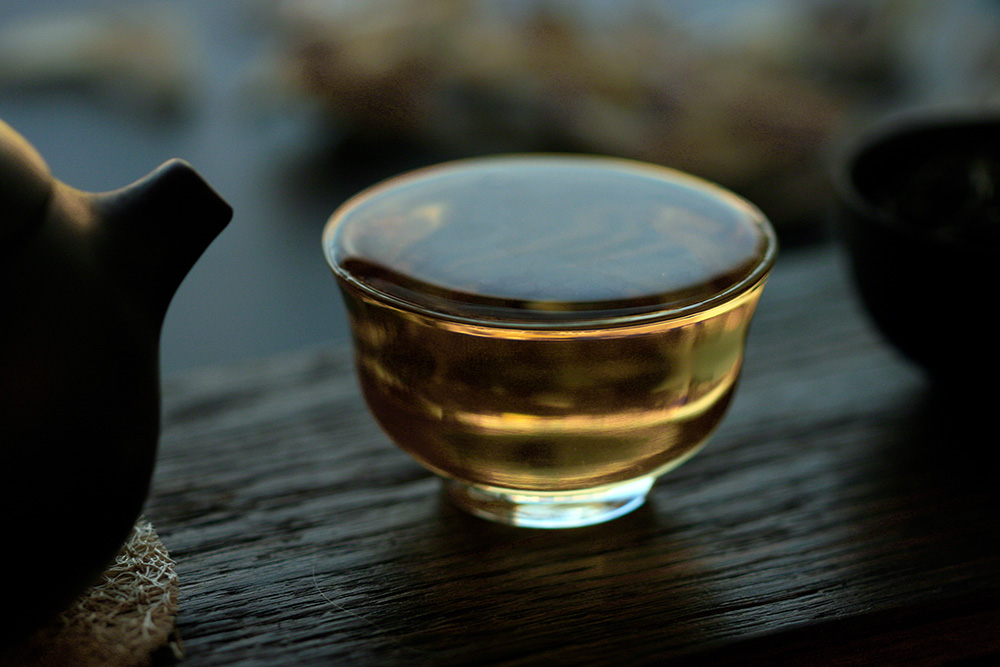The color and appearance of tea are an important element for judging the quality. Tea can have almost any color, from very light green or yellow, to an intense red and even blue. However, the more intense color does not necessarily mean you are drinking the highest quality tea. In fact, color adulterants are more common than you might think. Have you been drinking adulterated tea?
What influences the color?
Tea color depends on many factors. Water temperature, quality of leaves, steeping time, size of the leaves and water quality all influence the color of the brew. The color of tea leaves depends on the tea varietal, growing conditions, production process, chemical composition and other factors. Because of many factors, it’s not always easy to say if the color of your tea is natural.
Natural tea colors
Naturally, tea color ranges from almost transparent as in Silver Needle or Dragon Well, to orange and red for black teas. Blends usually have more color. For example, any blend containing hibiscus will have a deep purple color. Tea in teabags will generally have more intense color even if it’s not adulterated. For example, chlorophyll gives an intense green color to tea, so teas that contain more chlorophyll will naturally have greener color.
Adulterated tea
Adulterated tea is not a new problem. Typical coloring adulterants found in tea are Bismark Brown, Prussian Blue, coal tar dye, indigo, soapstone, plumbago (graphyte) and gypsum. However, it not only the color that is „enhanced“. Tea leaves can also be adulterated to look more attractive, to achieve a higher price, weight more or even hide the fact that they were already used. „Tea has also been found to be adulterated with starch, sand, China clay, French chalk, iron fillings, chicory, lather flakes, caffeine, used tea leaves and many more.[2]“
In fact, coloring tea leaves appeared long time ago.
“Robert Fortune noted in his 1852 book, A Journey to the Tea Countries of China, that the Chinese recipe for “enhancing” tea was to “crush Prussian Blue to a fine powder and add gypsum in a ratio of three to four resulting in a light blue dye powder. Add the powder five minutes before the end of the last roasting.“[3]
How to detect bad tea?
Detecting adulterated tea is not always easy and most times it might be impossible. The simplest, but not the only way, would be to put a bit of tea leaves in cold water and see if the color changed immediately[4]. Generally, tea always needs a certain temperature and time to release its compounds that provide both flavor, color and benefits. Some colors can be detected under the microscope and some with other chemical methods. For example, Indian Tea Board states that black tea usually contains plumbago which is used in lead pencils[5], and can be detected with a microscope[6].
Why you should be avoiding adulterated tea?
Adding adulterants to tea can be harmful. While some adulterants such as turmeric are likely to be safe, other can be cancerogenic. In India, „several cases of liver infection across the country have been reported due to consuming adulterated tea.“[7] Besides, you want to get what you pay for, and not a tea of a lower quality. Not only fake color is an issue with adulterated tea. Harmful pesticides, metals such as cooper, iron or lead, harmful chemicals and sugar can be found in many teas and blends listed as natural.
Want to avoid adulterated tea? Keep choosing organic loose leaf tea from reliable sources. One study in India concluded that the “low cost tea contained more adulterants as compared to high cost tea[8]”. It would be safe to conclude that loose leaf tea has a less chance to be adulterated than tea dust in teabags.
Have you ever encountered adulterated tea?

(Source: Tea Bespoke)
[1] https://ratetea.com/topic/additives-in-tea/80/
[2] Dr. Anindita Deb Pal, Tania Das “Analysis of adulteration in black tea.” International Journal of Biology Research Volume 3; Issue 1; January 2018; Page No. 253-257
[3] https://tching.com/2011/08/waiter-my-tea-is-blue/
[4] https://worldteanews.com/tea-industry-news-and-features/simple-test-for-color-additives-in-tea
[5] http://www.teaboard.gov.in/pdf/Colour%20in%20Tea.pdf
[6] https://chestofbooks.com/food/beverages/Adulteration-Origin/Adulterations-Of-Tea.html
[7] https://www.indiatoday.in/education-today/gk-current-affairs/story/common-food-adulterants-in-india-1370601-2018-10-19
[8] Dr. Anindita Deb Pal, Tania Das “Analysis of adulteration in black tea.” International Journal of Biology Research Volume 3; Issue 1; January 2018; Page No. 253-257



Leave a Reply Cancel Reply